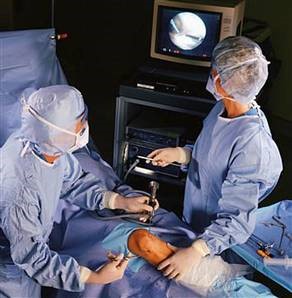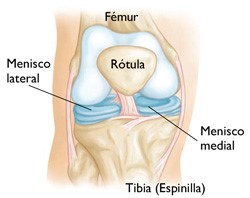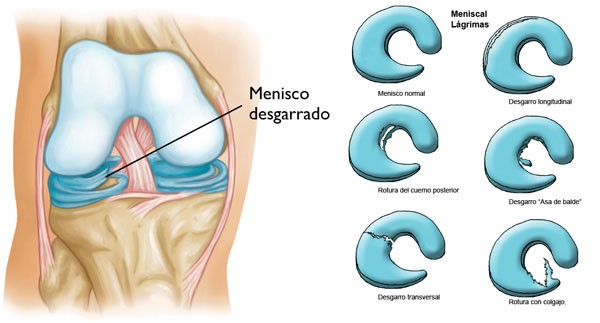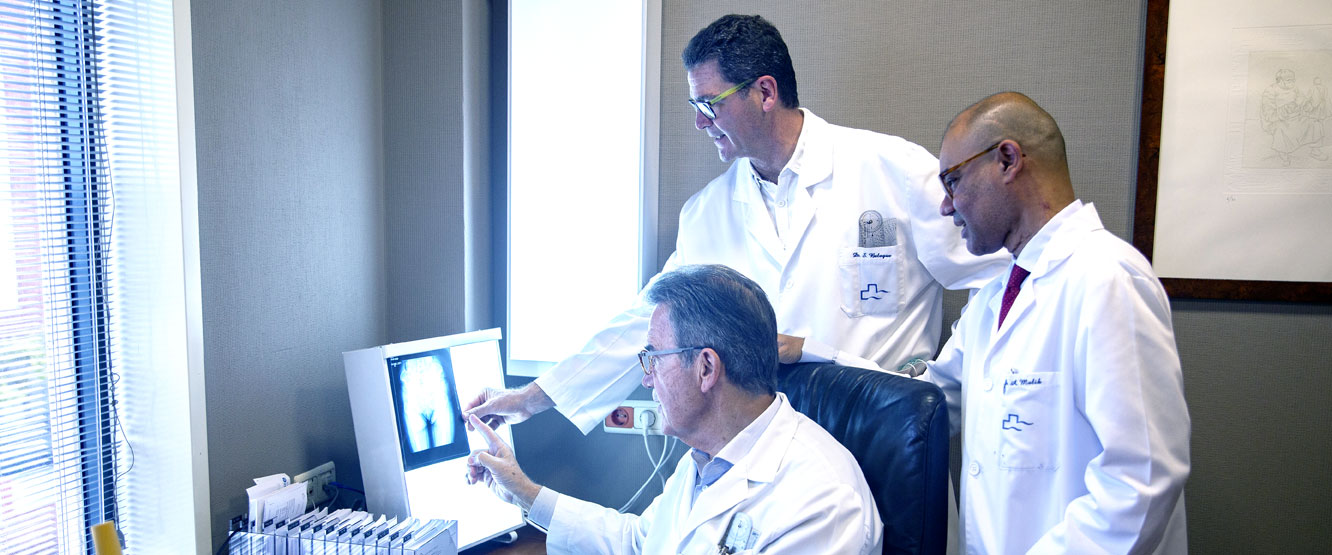Knee Arthroscopy

Description
Arthroscopy is a surgical technique in which the inside of a joint is directly visualized by means of a small camera connected to a monitor that allows the examination and repair of the internal tissues of a joint (knee, shoulder, hip, etc.). Arthroscopic knee surgery involves inserting the camera about 6 mm into the joint through a small incision (called a portal). The camera is connected to a monitor where the surgeon views the inside of the joint. After introducing the chamber, a saline solution (serum) is introduced under pressure to expand the joint which facilitates visualization and helps control bleeding through the arthroscopy cannulas.
 |
 |
With the camera, a tour of the knee is made, visualizing the internal structures and other complementary portals (small incisions) are made to introduce instruments that allow to fix the affected area during surgery. The most common instruments are a blunt hook to explore tissues, micro scissors and mini burs to resect injured tissues, and a thermo-coagulation scalpel to remove inflammation (synovitis) in the joint. Upon completion of the surgery, the saline solution is drained from the knee, the incisions are closed, and a dressing is applied.
In the case of a simple surgical procedure (eg for a meniscal injury, etc.), the surgery is performed under local or regional anesthesia, which numbs the affected area, but leaves the patient awake and able to respond. For major surgery, general anesthesia may be used occasionally, in which case the patient is left unconscious and sedated. As the majority of arthroscopies performed are minor surgeries, they are performed on an outpatient basis (the patient can go home the same day of the operation).
Indications
Arthroscopy is indicated for the following knee problems: Meniscal injuries, loose bodies inside the joint, reconstruction of an anterior or posterior cruciate ligament, inflammation or injury to the lining of the joint (synovitis), realignment of the patella due to hyper facet pressure, etc. A diagnostic exploratory arthroscopy is sometimes done when there is no clear diagnosis for a knee problem.
The menisci are a very frequently injured part of the knee; The meniscus is a cushion of elastic fibrocartilage in the shape of a "C" on the inside and outside of each knee between the femur and the tibia. It is a strong stabilizing fabric that helps the joint to distribute weight and slide easily in various directions. In a healthy knee of a young person (such as a soccer player etc.) the meniscus can be injured by twisting the knee, stopping or suddenly decelerating. In athletes, meniscal injuries often occur in combination with other injuries such as anterior cruciate ligament rupture etc. In older people, meniscal injuries can occur without any trauma as the cartilage, menisci, and ligaments weaken and wear down causing a degenerative injury. The prognosis for a degenerative injury is significantly worse than an acute rupture in a young person.
The initial treatment of a meniscal tear follows a basic formula: rest, ice, compression, and elevation, combined with anti-inflammatory pain medications. If your knee is stable (not associated ligament injury) and not immobilized, this conservative treatment may be all you need. Blood vessels supply the outer ridges of the meniscus, giving this part the potential to repair itself. Small tears in the outer edges are often repaired with rest.

Risks Involved with Arthroscopic Procedures
Expectations after Surgery
Arthroscopy reduces the need for open surgery, with the consequence of a decrease in the rate of complications in the postoperative period of pain, stiffness, bleeding, hospitalization time (if required) and recovery time. Expectations vary widely when surgery is recommended.
In general, surgery performed for a meniscal or intra-articular loose body rupture without any other associated problems (osteoarthritis or arthritis) is uncomplicated and almost all patients can expect a full recovery. The presence of osteoarthritis or arthritis substantially reduces the efficiency of arthroscopy and in these cases it is possible that up to 50% of patients do not improve during the postoperative period (and there is even a small percentage of patients that get worse). Arthroscopic resection of synovial tissue (lining of the joint) or arthroscopic synovectomy can be of great help in patients with rheumatoid arthritis.
Arthroscopy or arthroscopy-assisted surgery performed for the suture of a meniscus or reconstruction of the knee ligaments is much more complicated with a long recovery period and more variable results depending on the initial diagnosis and injury.
Convalescence and inmediate postoperative
In the case of arthroscopy with meniscal debridement (partial meniscectomy), recovery is usually rapid in about 2-3 weeks. The patient requires a pair of crutches for 7-14 days to avoid weight and pressure on the knee joint. The level of pain is mild-moderate and can be controlled with the usual analgesic-anti-inflammatory drugs in the postoperative period. Like most interventions on the lower limb, blood anticoagulants are indicated in the immediate postoperative period, varying between 3 and 6 weeks to avoid the risk of deep vein thrombosis or embolism of the operated leg. As the hospital does not provide crutches at the time of discharge, you have to go to surgery after having obtained them (either purchased at an orthopedic / pharmacy, or borrowed). The patient will go home with a compression bandage to immobilize the limb and reduce the swelling of the knee in the first days until the first control visit.
In more complicated procedures, in which something is fixed or reconstructed (cruciate ligament, etc.), the patient may not be able to walk bearing weight on the operated knee for several weeks. Full recovery can take a period varying from 6 to 12 weeks.
DR AAMER MALIK - Cirugía Ortopédica y Traumatología- Fellowship en Cirugía Protésica y Reconstructiva del Adulto (EE.UU.) - Hospital Universitario Sagrado Corazón, Barcelona.



